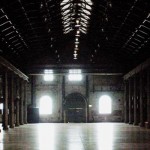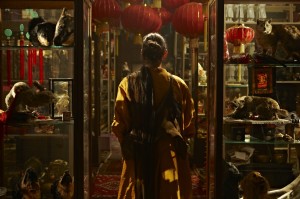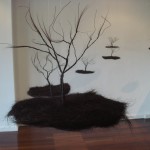Since I arrived in Sydney, arts-minded people of all walks of life have been pointing me towards the Australian Centre for Photography (ACP). For over 37 years, the ACP has been exhibiting works of both Australian and international photographers. My expectations were thus set reasonably high when I visited for the first time, for the opening of their current shows. The simple modern spaces were impressive and fertile ground for exhibiting artistic talent. While I could sense the talent in a few photographers on exhibition, shortcomings in production, in one case, and in curation, in the other, left me feeling as if the power of the work had been diluted.
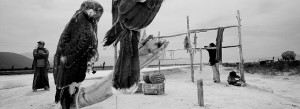
The work of Mexican documentary photographer Eniac Martínez is powerful, moving and profound. In Camino Real de Tierra Adentro (The Royal Road of the Interior), Martínez revisits sites along the over 3000km-long Camino Real (Royal Road) established by Spanish explorers 400 years ago. This road hosted many pivotal moments in Mexico’s history including Hidalgo’s advance on Mexico City, the US invasion of Mexico in 1846-8, Pancho Villa’s offensive in the Revolutionary War, etc. Martínez explores the confluence of times, sometimes creating an impression of 21st century life, sometimes capturing the timeless quality of the land seemingly unchanged since colonial times. We imagine how much has changed, how much hasn’t, and we wonder about the repercussions of colonialism on a people and a landscape.
The images themselves are quite stunning… if you stand far enough away. Printed on a foamcore-like substance, the well-traveled (read: sometimes slightly damaged) inkjet prints are not as fine as they could have been and, consequently, deny the viewer complete entrance. I am saddened by the quality of these prints, knowing full well the power encapsulated in Martínez’s images.
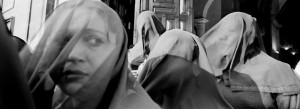
The main show entitled Mind Games posited to explore how acts of child’s play mirror the politics of the adult world. Upon inspecting the work and reading the information again, I was unconvinced. The premise of the show seemed tenuous. I failed to see the point of examining how play is charged with the politics of adult life, and how such an exploration contributed to my understanding of modern life.
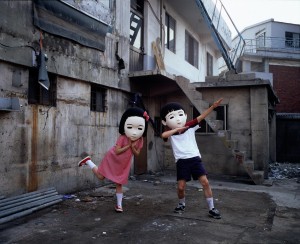
The work of Korean photographer Suk Kuhn Oh, for me, fit the “theme” best and had the most mature power. Adapting characters from primary school books, the Korean photographer placed these stereotypical children (now costumed adults) into adult situations. The poignantly lit display allowed for moments of intimacy and quiet shock at Oh’s images in which innocent child-like characters enact displays of a life that is anything but innocent.
The other talent on display at the ACP as part of the Mind Games show was Eric Bridgeman (whose work is also a visual arts highlight for Sydney’s Mardi Gras). On first impression, Bridgeman’s images are both chromatic studies and portraits. People, with their skin painted either snow white or pitch black, stand in a neutral scene surrounded by colours similar to what they are wearing. For me, what was jarring was Bridgeman’s use of blackface. For a North American, this seems like a racial taboo. In Australia, it is somehow innocuous fair game (On the Australian variety show Hey, Hey It’s Saturday! in October 2009, a group performed a tribute to Michael Jackson in blackface, to which guest judge Harry Connick Jr. reacted in suitable outrage, giving the group a 0). Bridgeman, who does have heritage from the Chimbu province of Papua New Guinea, has begun to explore race in a very provocative way. A protégé of the immensely talented Fiona Foley (recently featured in an impressive retrospective at the Museum of Contemporary Art), Bridgeman has not yet harnessed the power of what he intends to say yet. His portraits have power, yes, but his message is as of yet unclear.
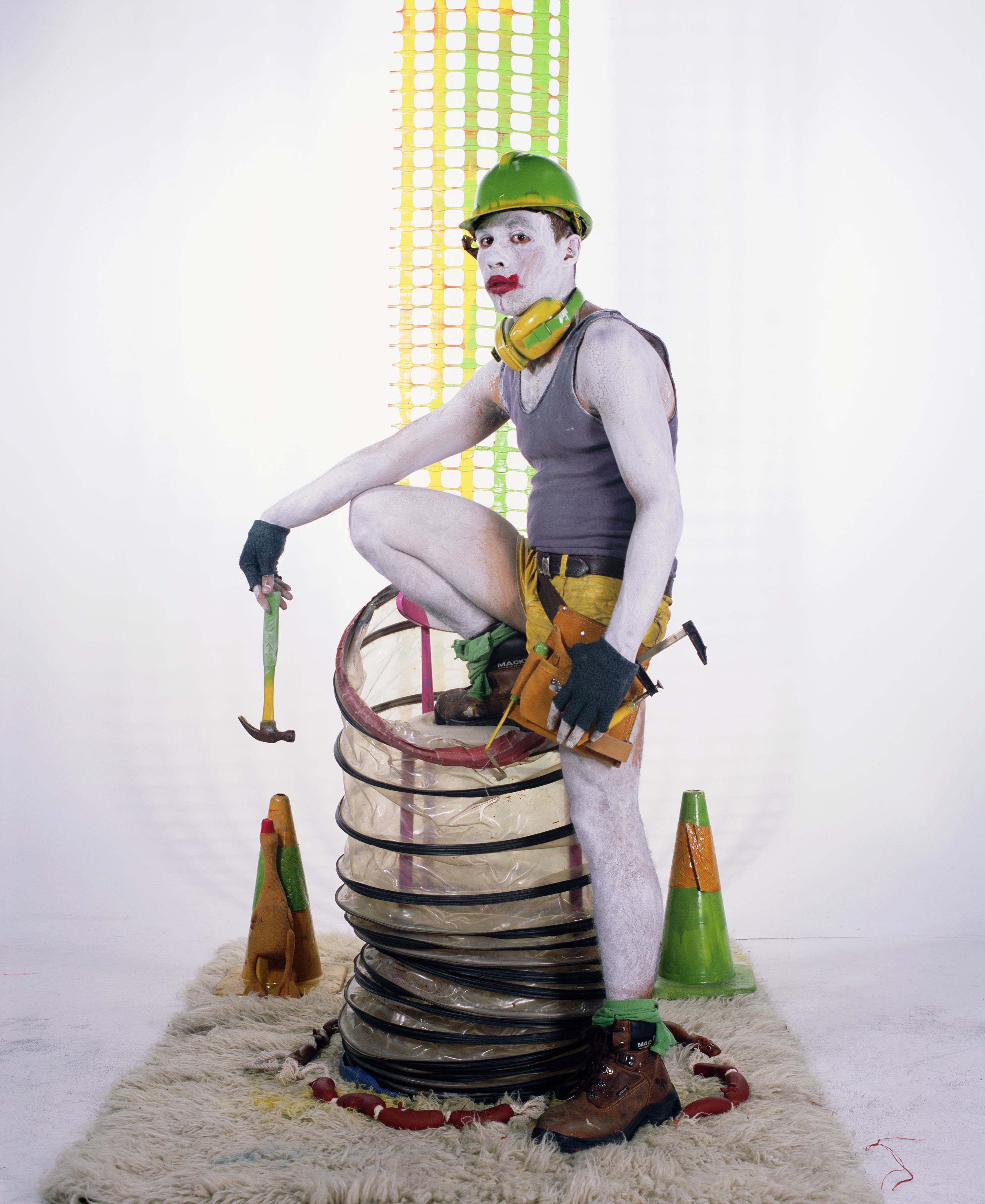
All in all, my experience at the ACP gave me immense food for thought. However, my thoughtful preoccupation stemmed not from awe at the work but more from the fact that I was fighting to understand both the quality of the printing of the Eniac Martinez exhibit and the intellectual framing of the ACP’s main four-photographer show. While the ACP may not have wholly impressed me, I was happy to be presented with the work of two photographers with powerful work and another with talent full of potential. I do very much look forward to upcoming exhibits and the new talent that the ACP will bring to the fore.
Photographer Eniac Martinez will be speaking at the ACP about his work on February 27 from 1-3 pm. Information can be found here.



